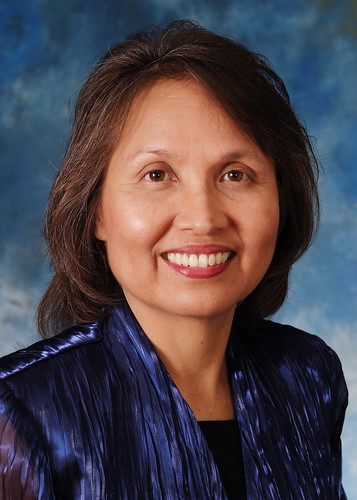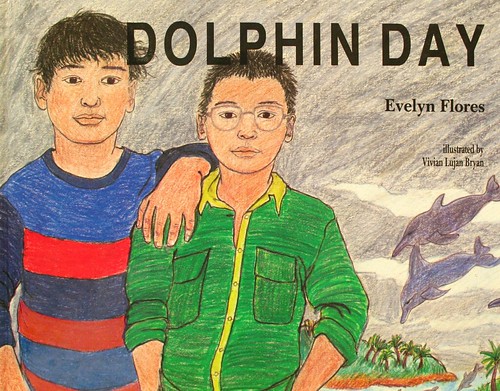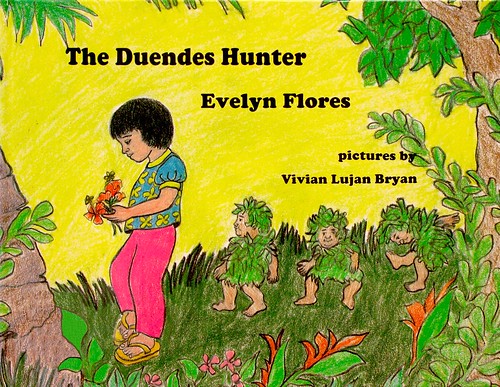Evelyn Flores
Writing from an indigenous perspective
Evelyn Flores, a professor of English at the University of Guam, is best known as the author of The Island Cousins Series, three books that explore issues of Chamorro identity. They are called Dolphin Day, Isa’s Avocado Tree and The Duendes Hunter. Her cousin, Vivian Lujan Bryan, is the illustrator.
Flores attended Guam Adventist Academy in Windward Hills, then went on to receive her Bachelor’s in English from Walla Walla College in Washington. She later moved to Andrews University in Michigan and obtained her Master’s in English, and then to the University of Michigan in Ann Arbor where she completed her PhD in Pacific Island Literature, Ethnic Literature, and late 19th-century American Literature from a postcolonial theoretical perspective.
Flores was born on Guam, the fourth oldest of seven children born to David DL Flores, Sr., and Justa Flores. She was raised in the central villages of Mongmong and Toto where she developed a love for storytelling and literature as a child. Growing up without television, Flores remembers listening to her mother tell exciting stories about growing up on Guam and about the war. She early on tried her hand at creative writing and was hooked. Obsessed with picture storybooks, she also enjoyed looking through her mother’s photo albums and began to write comic-strip type stories of her own.
The kitchen was a place for stories, Flores remembers. For example, when the women were working in the kitchen preparing for a fiesta, they would forget that the children were nearby and tell some rather racy tales with lots of loud laughter. When she would go visiting with her father she would hear the men’s versions of whatever was happening in the community. But no matter whether the storyteller was male or female, their accounts, Flores recalls with pleasure, were always told in Chamorro.
Flores now understands that writing for her was a first love, which later became a form of catharsis to work out the events of her life. Today, no matter how busy life becomes, she finds time to write. Writing, however, has also fulfilled other needs in her life.
After college, in her first attempt at being published, she submitted and won awards for two short stories. When her family returned to Guam in 1982, she had two little girls who needed to read books about themselves. Mistakenly, she thought there would be a lot of books for children about local island life. She was disappointed to find there were none. This lack of picture books about Chamorro children motivated her to author and publish three children’s books, The Island Cousins Series, to share experiences about the island and to explore issues of Chamorro identity.
In 2002, Flores became involved in a genealogy project of her family which included one of the major clans of Guam, the Cabesa Clan. The project’s goal was to put down in writing the oral history of one branch of that clan, plus the genealogy and family photos. Completed in 2006, it was a deeply satisfying project for her and taught her much about the history of Protestantism on Guam and her family’s role in introducing the Seventh Day Adventist Church to the island.
Flores grew up in a bi-religious home. On her mother’s side were very devout Catholics; on her father’s side were just as strongly devout Baptists, some of these later becoming Seventh-Day Adventists. The Cabesa project revealed to Flores how her family became Protestants on an island almost totally Catholic. As a scholar she was intrigued with the oral histories and these stories matched or conflicted with “official” stories of the missions. Through her work, she felt good to be able to carve out spaces for local stories to be told.
Flores is married to Max Mays, with whom she has two daughters. Besides teaching at the University of Guam, she is currently working on the first anthology of indigenous literature from Micronesia and completing a book that explores indigenous perspectives of a crucial series of events from World War II, when Guam was captured and occupied by the Japanese. She has also co-edited Images of Micronesia (2006) with Brian Milhoff, and published numerous creative writing pieces and scholarly articles, including Persistent Narratives of Female Deity among the Chamorro of Guam (2010), Kahulu! Kahulu! Get Up! Get Up! (2010), The Back of the Pickup (2010), Mulberry Picking (2009), Island Death (1992), and Overboard (1984).
Flores says her formal influences include many of the great writers that she has read because of her literature background. She believes the most liberating influences for her come from Native American and Pacific Island writers. She says, they gave her “permission” to write her life through her own eyes and with her own voice. They authorized her stories. They told her that her stories were invaluable despite what the official canons might say. They also told her that if she did not write her stories down, then the life of the Chamorro people in the 20th and 21st centuries will only be known through the views of outsiders.
That need for more published primary works by Pacific Islanders is what, Flores says, drives her vision, her goals and her projects. She urges island people today to write their experiences down and publish them. The world, she asserts, needs to hear “the whole story,” yours and mine.
For further reading
University of Guam. “Directory | Evelyn Flores.”



